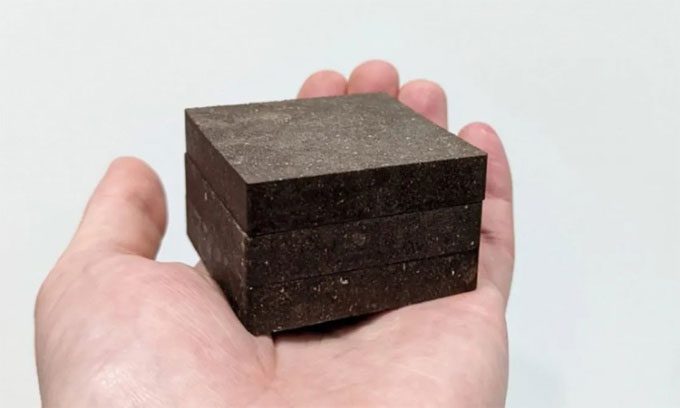Experts at the University of Manchester Develop New Space Concrete Made from Cosmic Dust, Potato Starch, and Salt.
Over 50 years after the first human set foot on the Moon, humanity is preparing for significant advancements in space exploration. The Moon, followed by Mars, will be the first destinations for establishing human settlements.

The research team from the University of Manchester creates StarCrete concrete from extraterrestrial dust, potato starch, and salt. (Photo: Aled Roberts)
Due to the inability to return to Earth quickly during deep space missions, utilizing locally available materials is crucial. Transporting materials from Earth would be extremely costly for space agencies.
To facilitate construction on other celestial bodies, the team of experts at the University of Manchester has developed StarCrete – a new type of “space concrete” made from cosmic dust, potato starch, and salt, as reported by Interesting Engineering on March 17. The new research was published in the journal Open Engineering.
In the study, scientists demonstrated that when mixed with simulated Martian dust, potato starch acts as a binding agent. The resulting material is twice as strong as conventional concrete and can be used for construction beyond Earth.
StarCrete has a compressive strength of 72 Megapascals (MPa), while conventional concrete has a compressive strength of 32 MPa. When tested with lunar dust, StarCrete excelled with a figure of 91 MPa.
Calculations suggest that a 25kg bag of dry potato contains enough starch to produce nearly half a ton of StarCrete, equivalent to 213 bricks. The research team also found that magnesium chloride – which exists on Mars – and astronaut tears could help increase the durability of this material.
Previously, they had experimented with using human blood and urine as binding agents. However, this is not practical on a large scale, and astronaut health could be at risk in the harsh space environment.
“We will produce starch for astronaut food, so using starch as a binding agent makes more sense than human blood. Additionally, current construction technologies still need years of further development and require significant energy and heavy processing equipment. All of this increases the costs and complexity of missions. Meanwhile, StarCrete does not require any of these, simplifying the mission, reducing costs, and increasing feasibility,” said Dr. Aled Roberts from the University of Manchester, a member of the research team.
StarCrete could also be a more environmentally friendly alternative to traditional concrete used on Earth. The production of cement and concrete accounts for about 8% of global CO2 emissions. After completing this research, the team of experts will continue testing to enhance the durability of StarCrete for future use.





















































